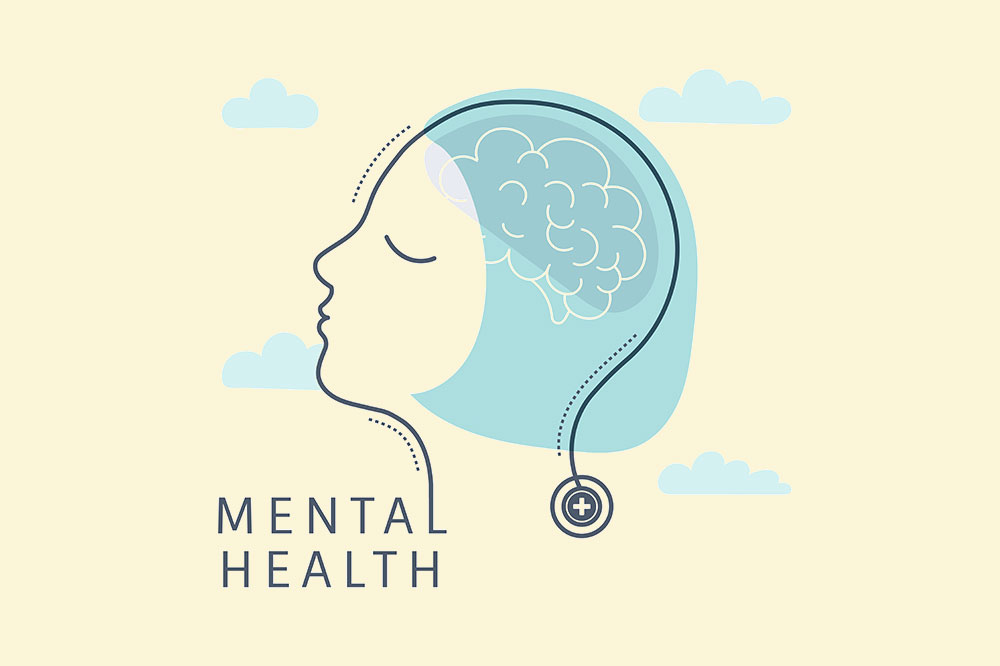
Understanding mental health and associated disorders
Mental health refers to cognitive, social, and emotional well-being and is associated with how people think, regulate their feelings, and behave. Over the last couple of decades, the focus on the subject has evolved; the conversation surrounding mental health disorders has become more acceptable, and its impact more noticeable. Mental health is important at every stage of life, as it affects one’s daily life, relationships, physical health, and by extension, one’s quality of life.
Understanding mental health disorders
Mental health disorders can be broadly divided into the following categories:
Anxiety disorders: This is the most common mental illness, according to the Anxiety and Depression Association of America. People with these disorders often face severe fear or anxiety stemming from particular situations or objects. Some common anxiety disorders are obsessive-compulsive disorder (OCD), generalized anxiety disorder (GAD), panic disorder, phobias (simple phobias related to objects, social phobias pertaining to social situations, and/or agoraphobia), and post-traumatic stress disorder (PTSD), among others.
Mood disorders: These are also known as affective or depressive disorders. People with mood disorders experience significant mood changes involving mania (periods of high energy) and depression. The most common mood disorders are major depression, bipolar disorder, and seasonal affective disorder.
Schizophrenia disorders: The term is used for a spectrum of disorders characterized by psychotic features and other complex symptoms. According to the National Institute of Mental Health, signs of schizophrenia tend to develop between the ages of 16 and 30, generally led by fragmented thoughts and difficulty in processing information. Schizophrenia may be accompanied by a flurry of symptoms, including delusions, thought disorders, hallucinations, withdrawal, and lack of motivation.
Causes
There is no single cause associated with mental health disorders. They may be brought on by factors like:
Traumatic or abusive life experiences
Chronic medical conditions such as cancer or diabetes
Biological factors or chemical imbalances in the brain
Substance abuse
Feeling lonely or isolated
Socioeconomic conditions such as unemployment, occupation, work stress, education, housing quality, gender, sexuality, age, and ethnicity
Childhood adversity like neglect, parental loss, separation, illness, or abuse
Early signs
One should look out for the following changes as possible early signs of mental health disorders:
Withdrawing from social circles
Avoiding activities one normally enjoys
Sleeping too much or too little
Major changes in appetite
Feeling hopeless
Feeling consistently low on energy
Thinking of causing physical harm to themselves or others
Frequent use of mood-altering substances
Displaying negative emotions
Experiencing delusions
Being unable to complete daily tasks
Recurring or persistent thoughts and memories that trigger negative emotions
Hearing voices
How are these disorders diagnosed?
The American Psychiatric Association (APA) publishes a guide called the Diagnostic and Statistical Manual of Mental Disorders (DSM) that explains the signs and symptoms of hundreds of mental health conditions, like anxiety, depression, PTSD, schizophrenia, and eating disorders among others. The DSM contains descriptions, symptoms, and other criteria for diagnosing disorders and specifies the typical course of the disorder, risk factors, and common coexisting conditions. Currently, DSM-5-TR is the standard classification of mental disorders used by mental health professionals in the country.
Doctors diagnose a mental health disorder in several different steps. They may begin by checking the health history and performing a thorough physical exam to rule out any underlying physical causes contributing to the symptoms. While laboratory tests cannot diagnose mental illnesses, doctors may ask for tests like blood work or imaging exams to rule out underlying causes. They will also conduct a psychological evaluation, which involves asking questions about a person’s symptoms, experiences, and the impact of these symptoms on their lives. Healthcare professionals may ask the patient to fill out questionnaires to better understand their thought patterns, feelings, and behaviors.
Treatment
Treatment plans for these disorders are highly individualistic, and there is no one-size-fits-all option. Some treatments are more successful when combined with other options. One should work closely with their doctors to devise a plan that works best for them. Some options include:
Psychotherapy: This involves taking a psychological approach to mental illness. It is also known as talking therapy and involves plans like cognitive behavioral therapy, exposure therapy, and dialectical behavior therapy. It is carried out by licensed psychiatrists, psychologists, and some primary care physicians to understand the root cause of the illness and develop healthier thought patterns in patients.
Hormonal treatments: In advanced cases, psychiatrists may prescribe hormonal treatments like serotonin or dopamine to alleviate severe symptoms, help resume social interaction, and follow a routine to continue working on one’s mental health.
Self-care: People can also try relaxation techniques like meditation, deep breathing, and mindfulness to cope with mental health issues. Better nutritional habits, adequate hydration, and at least 30 minutes of daily exercise can also help. Prioritizing sleep, practicing gratitude, goal-setting, and trying to maintain a positive outlook can also help relieve symptoms.




